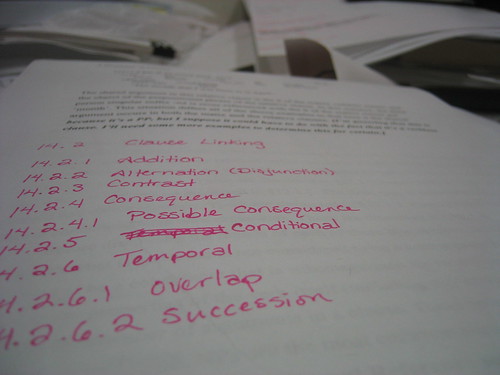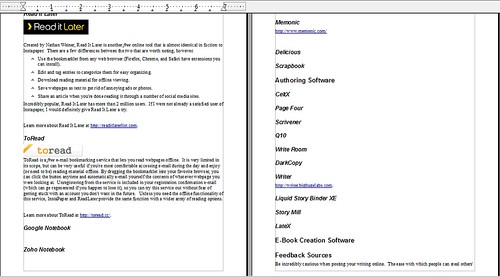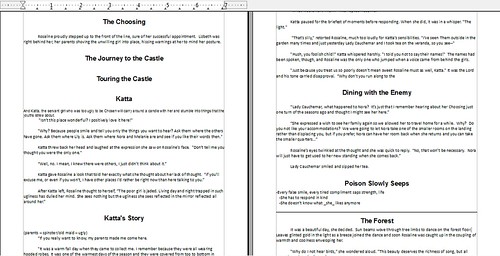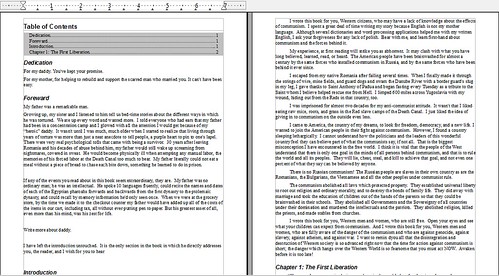
This might come as a surprise to you, but the hardest part of writing an essay is not the actual writing of it; it’s the coming up with ideas for what you write. I’ve already discussed ways to generate ideas using freewriting and mindmapping, but I’ve yet to mention my personal favorite method: outlining.
Informal Outlines
I, like many people, suffer from fear of the blank page. The way I overcome that hurdle is to list as many major points in my paper as I can come up with. Then I start filling in each main point (adding more as I come up with them). Not only does it help organize my essay right from the get-go, but it gives me a realistic view of how far along in my work I am. It helps with goal-setting as well as I assign myself a number of sections each day or week, and make myself accountable for completing them. If you have a long report to complete, breaking it down into bite-size sections is advice any writer will give you.
John McGie in his article “One Professional’s Steps for Writing a Book” offers up that same advice:
Switch to Outline View and type in your headings. Apply Heading 1 to all of them. Now promote/demote/move headings to set the structure for your book. Print the result and have it reviewed. Go back to Word and move around/apply the changes. Switch to Normal View and type your text under each heading. Print this and have it reviewed.
For our purposes, “headings” will be your main points. (If you’re interested in writing a book, stop by McGie’s original article to learn more about how to set up chapters in Word.) What I particularly like about McGie’s advice is he advocates asking for feedback at various points of your project. Having another set of eyes helping you find errors in your writing is integral to having a final product you can be sure is as error-free as possible.
Examples
Reading about how to accomplish something is all well and good, but (if you’re like me) seeing examples of the finished product can add that extra bit of help you need to fully understand what’s expected of you. It’s why so many of us like to complete jigsaw puzzles with the cover propped up next to us to guide us. As a guide to help you understand what I’ve been explaining about informal outlines, I’m including a few of my own from projects I’m working on right now.
Note how in each example I have created headings for main points/chapters. I personally like to skip around and fill in each section as inspiration strikes. I leave sections half-finished as well; it gives me something to return to later and finish, makes me feel as though I’ve accomplished something already, and keeps the page from being too “blank.”
Click on each image to be taken to a larger version. 


So the next time you have a major writing assignment, consider giving outlining a try. It’s my method of choice for generating ideas and creating structure and organization in papers, and it takes very little effort. Whereas if you create a mind-map, you have to translate the ideas in that diagram into an essay.
As a final note, please do not mistake informal outlines for formal outlines, which are often assigned by teachers. Formal outlines have specific rules you must follow. My next post will deal exclusively with the rules of formal outlining, so stay tuned for that.
Happy writing!
Photo credit: Dmscvan
















0 comments:
Post a Comment